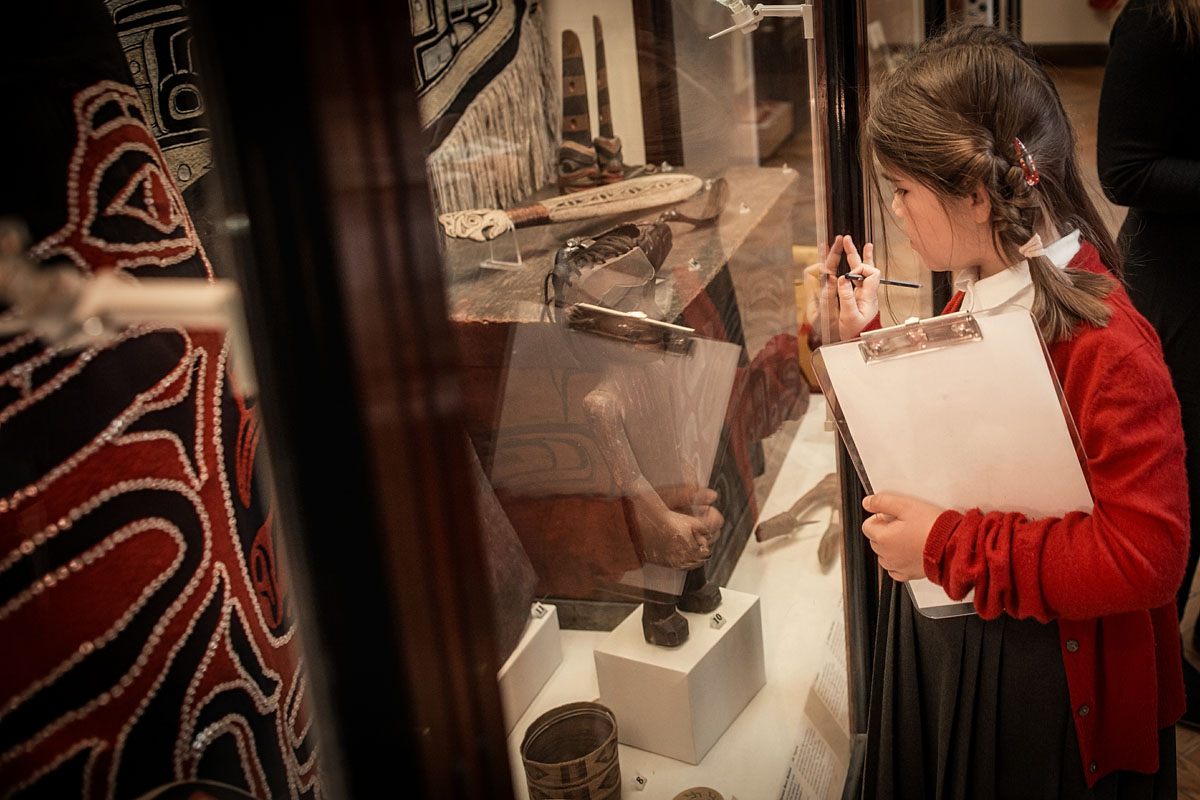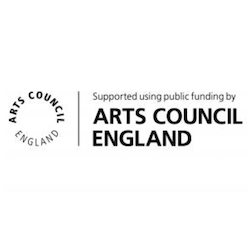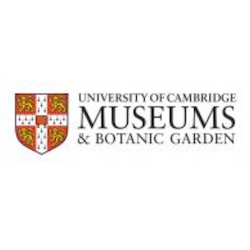The following taught sessions are offered for KS2 students:
Ancient Maya (90 minutes)
How did the ancient Maya express their identity? What objects did they use to show their power? What can archaeology tell us about Maya life? These are some of the questions we will discuss while students learn how to read a Maya monument and handle objects from Central and South America.
A museum teacher leads the first 30 minutes of the session. The session focuses on part of a monument from the World Heritage site of Quiriguá. The students are then divided into two groups. One group completes a self-guided activity looking at Maya collections in the Museum. The other group takes part in a multisensory handling session that includes objects such as obsidian and smells such as copal. After 30 minutes the groups swap, then the visit ends with a short plenary session.
Stone Age to Iron Age (90 minutes)
Students will use their senses to explore the sounds, sights and smells of the past. Pupils will consolidate their chronological understanding and identify the similarities and differences between ways of life in different time periods.
A museum teacher leads the first 30 minutes of the session. Pupils learn simple actions as a way of remembering the names and characteristics of each time period. The students are then divided into two groups. One group creates a ‘tool timeline’ using real objects from our handling collection such as a hand-axe, an arrowhead and a scraper. The other group completes a self-guided activity using MAA’s multisensory bags. After 30 minutes the groups swap, then the visit ends with a short plenary session.
Angles, Saxons and Jutes (90 minutes)
Archaeologists use objects from burials (grave goods) to learn about the lives, art, culture and settlements of Anglo-Saxons and Vikings. Students will see grave goods, complete a sensory activity and reconstruct an Anglo-Saxon burial using real artefacts and teaching replicas.
A museum teacher leads the first 30 minutes of the session. The students are then divided into two groups. One group completes a self-guided activity using MAA’s multisensory bags. The other group takes part in a handling session that includes objects such as a horn cup, brooches and fragments of cremation urns. After 30 minutes the groups swap, then the visit ends with a short plenary session.
Roman Britain (90 minutes)
What was life like in Roman Britain? Did people live in the Cambridge area in Roman times? What can archaeology tell us about Roman settlements in Britain? These are some of the questions we will discuss as students see and handle objects from across the Roman Empire as well as objects found in Duroliponte (Cambridge’s Roman name).
A museum teacher leads the first 30 minutes of the session. The students are then divided into two groups. One group takes part in a handling session that includes real objects such as mosaic fragments, an oil lamp and a brooch. The other group completes a self-guided activity. After 30 minutes the groups swap, then the visit ends with a short plenary session.
Cambridge Settlements (90 minutes)
Build a timeline of Cambridge’s prehistoric and historic settlements through the remarkable objects displayed in the Cambridge gallery. Pupils will have the opportunity to handle objects from time periods through history: Stone Age, Bronze Age, Iron Age, Roman, Anglo-Saxon and Medieval.
A museum teacher leads the first 30 minutes of the session. The students are then divided into two groups. One group takes part in a handling session that includes British archaeological finds from the Stone Age through to Medieval times. The other group completes a self-guided timeline activity inspired by objects from Cambridge. After 30 minutes the groups swap, then the visit ends with a short plenary session.
West Africa and Benin (90 minutes)
Students will experience the diverse cultural life of West Africa through masks, jewellery, metal work, musical instruments and everyday items.
A museum teacher leads the first 30 minutes of the session. The students are then divided into two groups. One group completes a self-guided activity inspired by our West African collections. The other group takes part in a handling session that includes objects such as a quiver and arrows, gourds and gold weights. After 30 minutes the groups swap, then the visit ends with a short plenary session.
Native Americans: North America (60 minutes)
This gallery-taught session focuses on Native American and First Nation cultures of the Northwest Coast, Southwest and Great Plains of North America. Students will come face to face with fascinating objects such as a 14m Haida totem pole, a Plains Cree chief outfit and a Kachina Doll made by the Hopi.
A museum teacher leads the first 30 minutes of the session. The students can then use the remaining 30 minutes to complete a self-directed activity that will help them explore the galleries.
The Americas (90 minutes)
Find out about the peoples and cultures of Mesoamerica and South America. See and handle objects from Peru, Mexico and even the far corners of the Amazon rainforest. From modern jewellery to ancient potatoes, this session will help students better understand the cultural diversity of Latin America.
A museum teacher leads the first 30 minutes of the session. The students are then divided into two groups. One group completes a self-guided activity inspired by objects from Latin America. The other group takes part in a handling session that includes objects such as a necklace made out of seeds from the Amazon, musical instruments and a chocolate whisk. After 30 minutes the groups swap, then the visit ends with a short plenary session.
Extreme Environments (90 minutes)
How have people adapted to extreme environments such as deserts, jungles or polar regions? How do these environments impact their way of life and culture? These are some of the questions students will think about as they as they look and handle objects from the Amazon rainforest, Australian desert and Himalayas.
A museum teacher leads the first 30 minutes of the session. The students are then divided into two groups. One group completes a self-guided worksheet. The other group takes part in a handling session that includes objects such as a woven song from the Amazon rainforest, Himalayan boots and a boomerang from Australia. After 30 minutes the groups swap, then the visit ends a with short plenary session.
Explorers (60 minutes)
Learn about the people of the world and the European explorers who encountered them.
A museum teacher leads the first 30 minutes of the session. Pupils see objects collected during the first encounters between Europeans and Pacific Islanders and learn about objects from the Torres Strait Islands as well as Alaska and Greenland. The students use the remaining 30 minutes to complete a self-directed map activity.
Learning from Objects (90 minutes)
Through enquiry based learning and handling real artefacts, students will discover how archaeologists and anthropologists use objects to learn about people.
A museum teacher leads the first 30 minutes of the session. The students are then divided into two groups. One group completes a self-guided activity inspired by the objects in the gallery. The other group takes part in a handling session that includes objects such as Fijian club, a woven song from the Amazon rainforest and an Indonesian printing block. After 30 minutes the groups swap, then the visit ends with a short plenary session.
Ready to book your visit?
Click here to find out more about booking your session, or get in touch with us at education.bookings@maa.cam.ac.uk.
Looking for classroom resources? Click here to explore our downloadable resources, based on our taught schools' sessions for use as part of your curriculum teaching.







